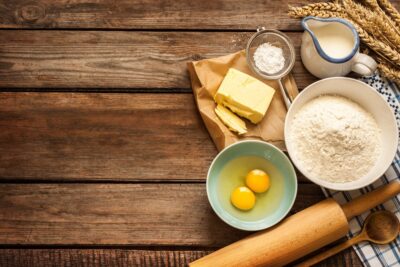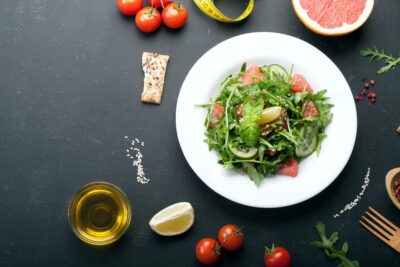Recipe Costing: What You Need to Know
Recipe costing is a vital aspect of running a successful restaurant or food business. It involves calculating the cost of each ingredient used in a recipe to determine the overall cost of producing a dish. By accurately estimating the cost of each recipe, businesses can set menu prices that ensure profitability while remaining competitive in the market.
Why is Recipe Costing Important?
Understanding recipe costing is essential for several reasons:
- Profitability: Understanding the costs associated with each dish helps businesses analyze their profitability. By comparing the cost of ingredients to the selling price, owners can identify which menu items are the most profitable and make informed decisions about menu changes.
- Menu Planning: Knowing the cost of individual ingredients can also influence menu development. Chefs can use this information to create dishes that are both delicious and cost-effective, ensuring a balance between quality and profitability.
- Inventory Management: Recipe costing also plays a role in inventory management. By tracking ingredient costs and usage, businesses can better control inventory levels, reduce waste, and optimize purchasing decisions. This helps minimize food costs and improve overall efficiency.
- Budgeting and Pricing: By knowing the cost of each ingredient, a chef or restaurant owner can accurately calculate the total cost of producing a menu item. This allows them to set appropriate prices that cover expenses and generate profit. Without accurate recipe costing, it’s easy to underprice dishes and lose money.
How to Calculate Recipe Costs

Calculating recipe costs involves determining the cost of each ingredient used in a recipe and factoring in other expenses such as labor, overhead, and packaging. Here’s a simple formula to help you calculate recipe costs:
Total Recipe Cost = (Cost of Ingredient 1 + Cost of Ingredient 2 + … + Cost of Ingredient n) + Labor Cost + Overhead Cost + Packaging Cost
Steps to Calculate Recipe Cost:
- List Ingredients: Start by listing out all the ingredients needed for the recipe, including quantities and unit prices.
- Calculate Ingredient Cost: Multiply the quantity of each ingredient by its unit price to get the total cost for each ingredient.
- Include Other Costs: Don’t forget to account for other costs such as labor, utilities, packaging, and overhead expenses. Divide these costs by the number of items the recipe yields to get a per-item cost.
- Add It All Up: Add up the total cost of all ingredients and other costs to get the total recipe cost.
- Determine Serving Size: Divide the total recipe cost by the number of servings the recipe yields to get the cost per serving.
Below is an example of a recipe costing form that you can use to calculate the cost of a specific dish:
- Dish Name: [Name of the dish]
- Ingredients:
- [Ingredient 1]: [Amount used] [Cost per unit]
- [Ingredient 2]: [Amount used] [Cost per unit]
- [Ingredient 3]: [Amount used] [Cost per unit]
- …
- Total Cost: [Total cost of ingredients]
- Yield: [Number of portions the recipe makes]
- Cost per Portion: [Total cost divided by yield]
Using a form like this can help you keep track of all the expenses associated with a recipe, including the cost of ingredients, labor, overhead, and more. It’s important to be as detailed as possible when filling out the form to ensure accurate calculations.
Managing Recipe Costs
Here are some general steps to follow for optimal recipe costing:
1. Determine Your Ingredients
The first step in recipe costing is to determine all the ingredients that go into each dish. Make sure to include every item, no matter how small or seemingly insignificant. This includes spices, condiments, and garnishes.
2. Calculate the Cost of Each Ingredient
Once you have a list of all your ingredients, it’s time to calculate the cost of each one. This may require some research, especially if you buy in bulk or use specialty items. Be sure to factor in waste and spoilage when determining the cost of each ingredient.
3. Measure and Weigh Ingredients
To accurately calculate the cost of a recipe, you’ll need to measure and weigh each ingredient. Use a kitchen scale for accurate measurements, and be sure to account for any discrepancies in portion sizes.
4. Calculate Recipe Yield
Determine how many servings each recipe makes. This will help you calculate the cost per serving, which is essential for pricing your menu items appropriately. Keep track of portion sizes to ensure consistency in serving sizes.
5. Factor in Overhead Costs
Don’t forget to factor in overhead costs such as labor, utilities, and equipment when calculating the cost of each recipe. These costs can significantly impact your bottom line, so it’s important to include them in your calculations.
6. Update Regularly
Recipe costing isn’t a one-time process. It’s important to regularly review and update your costs to account for fluctuations in ingredient prices and changes in portion sizes. By staying on top of your recipe costing, you can ensure that your menu remains profitable.
The Advantages of Recipe Costing Software

Recipe costing software allows you to input all the ingredients and quantities used in a recipe, along with their current prices. The software then calculates the total cost of the recipe, taking into account factors like waste and shrinkage. This information is invaluable when it comes to pricing your menu items accurately.
Here are some of the key advantages of using recipe costing software:
1. Accurate Costing
Recipe costing software ensures that you have a precise understanding of the cost of each menu item. This allows you to set prices that cover your expenses while still offering value to your customers.
2. Profitability Analysis
By knowing the exact cost of each dish, you can analyze which items are the most profitable and adjust your menu accordingly. You can also identify any items that may be underperforming and make changes to improve their profitability.
3. Inventory Management
Recipe costing software helps you keep track of your inventory levels and ensure that you always have the necessary ingredients on hand. This can prevent waste and reduce the risk of running out of key items during service.
4. Menu Engineering
With recipe costing software, you can easily experiment with different menu configurations and pricing strategies to see how they impact your overall profitability. This can help you make informed decisions about which items to feature and how to structure your menu for maximum profitability.